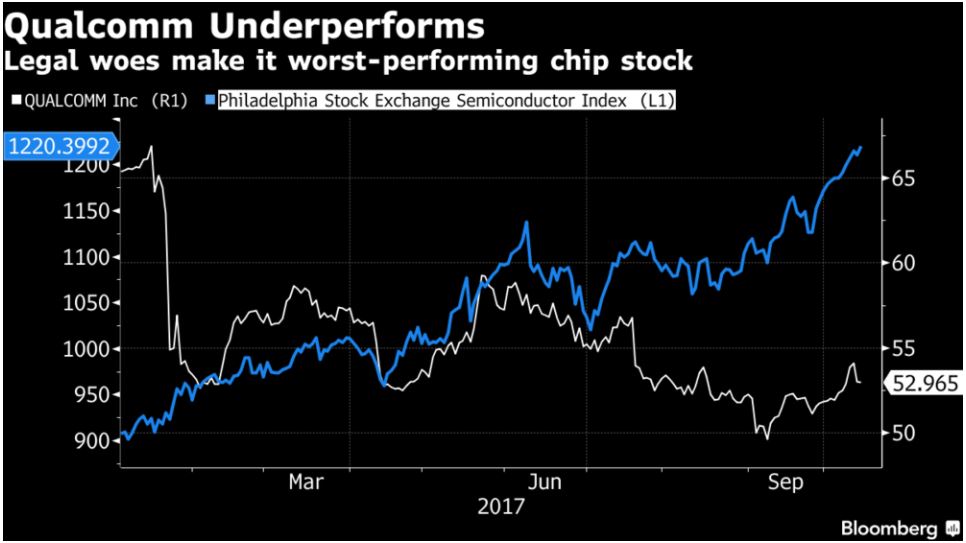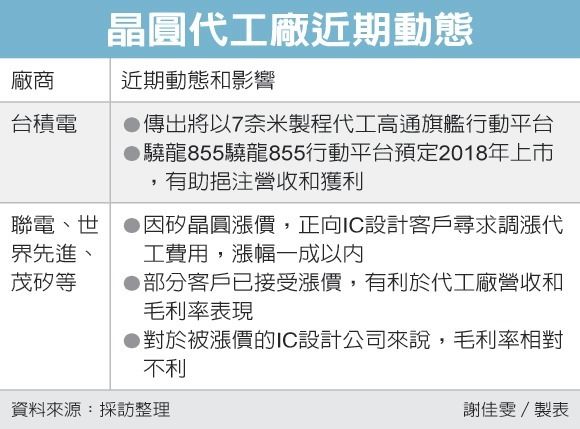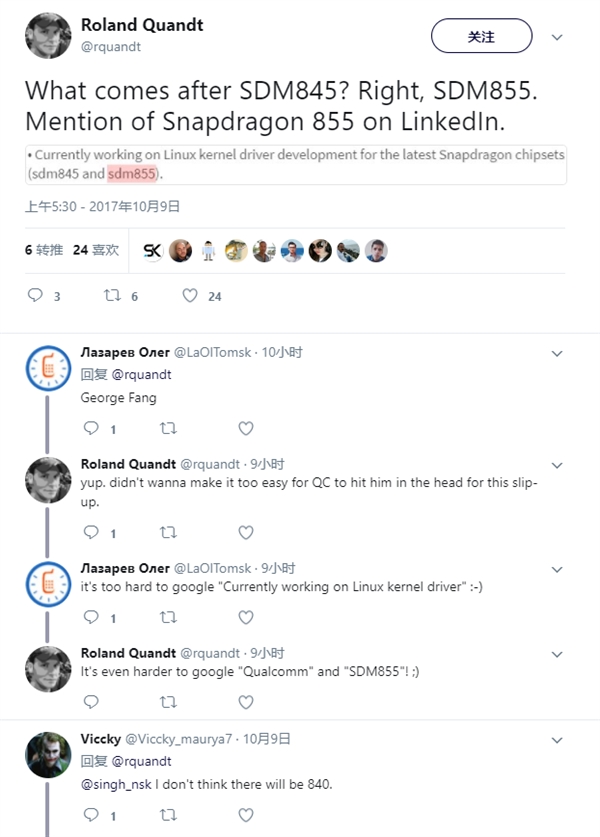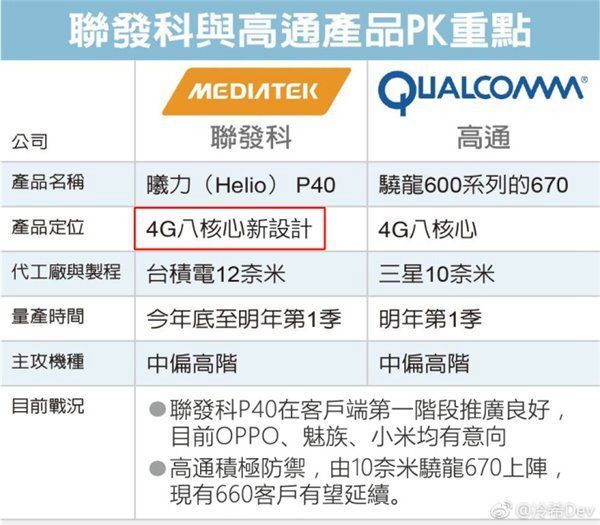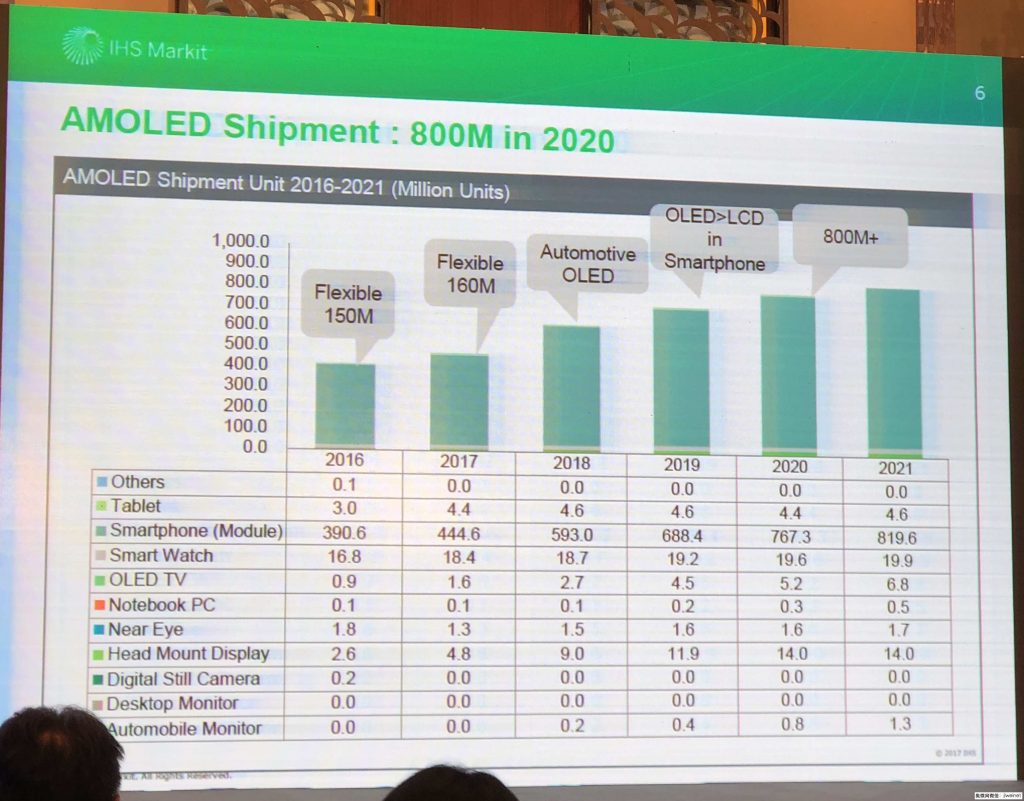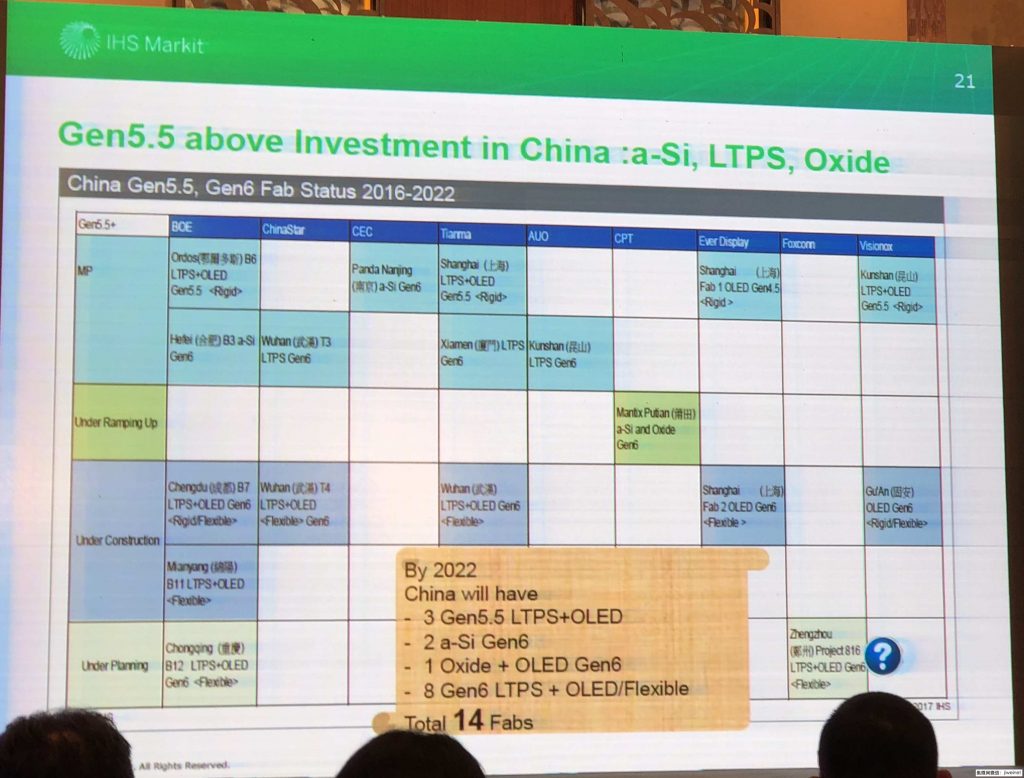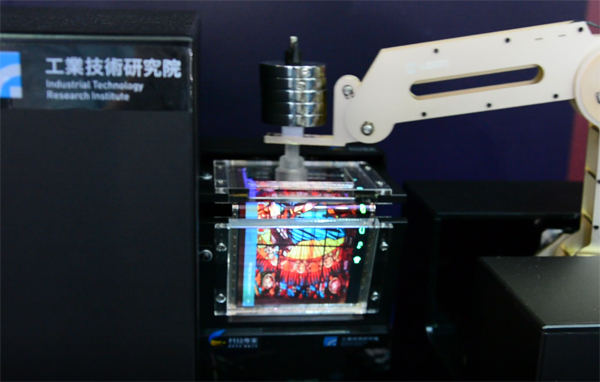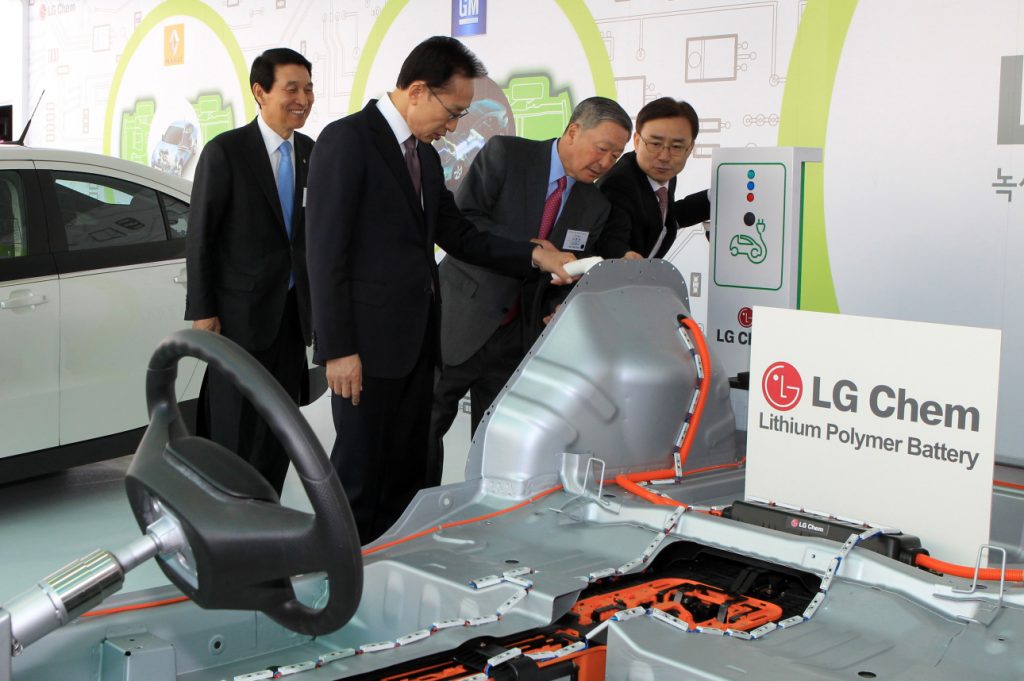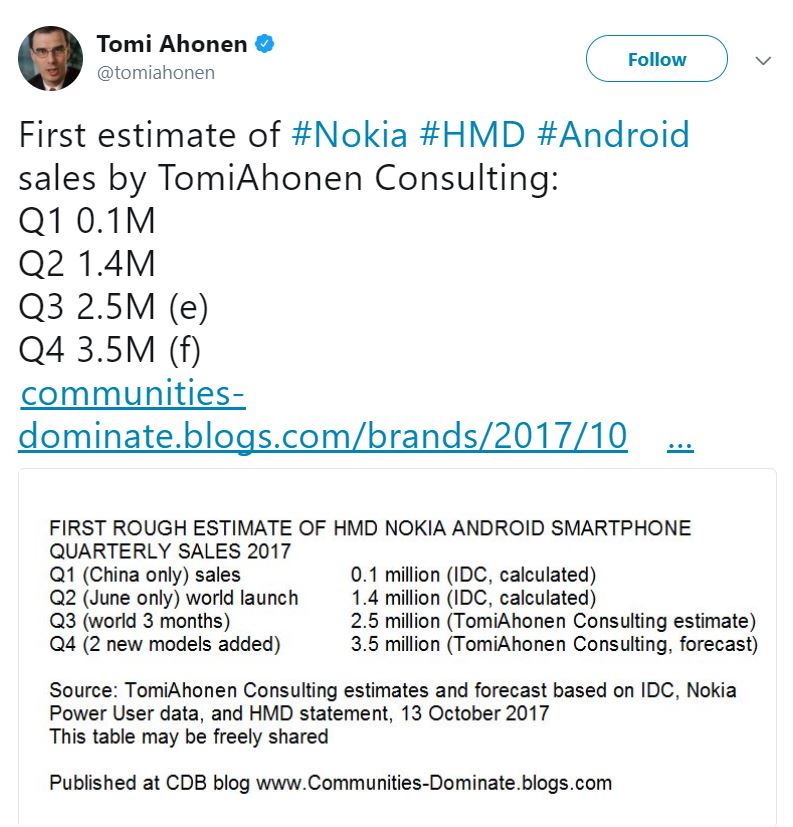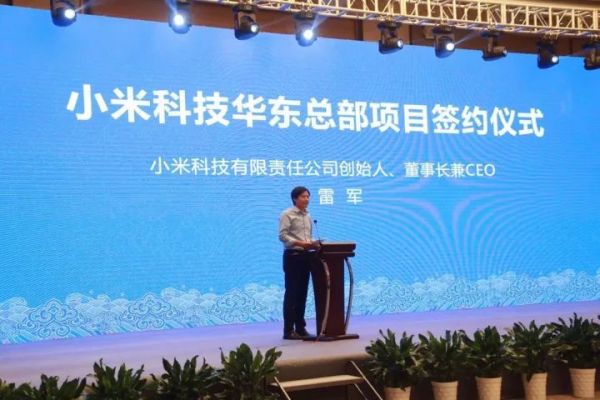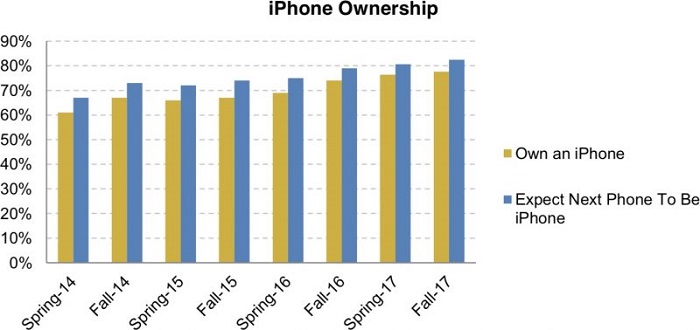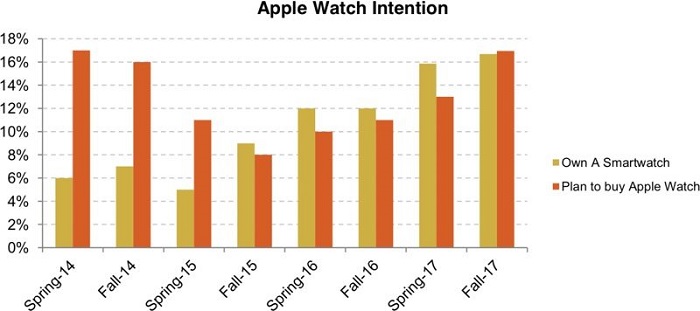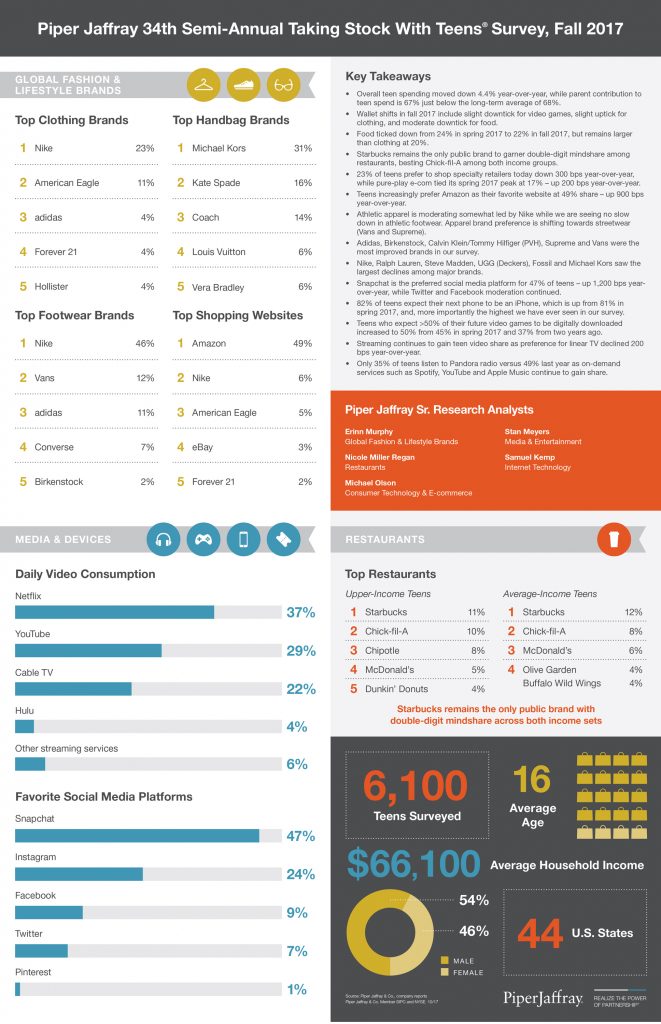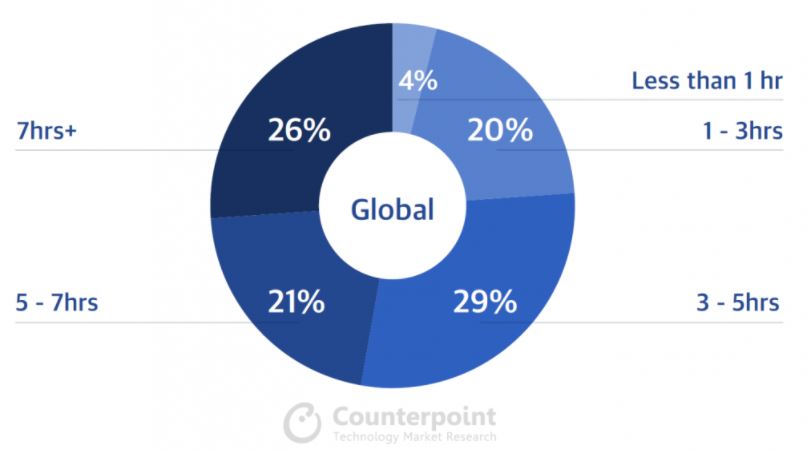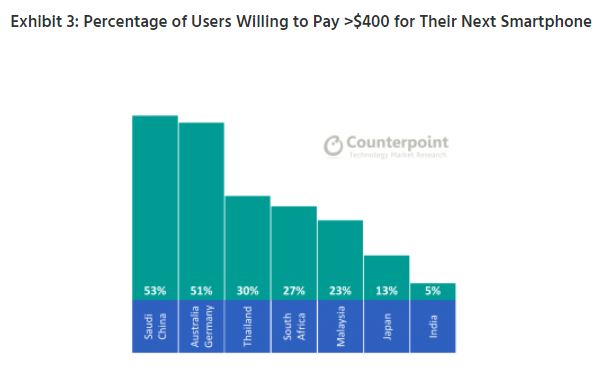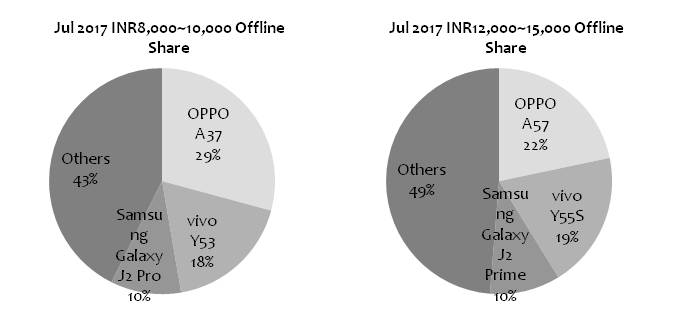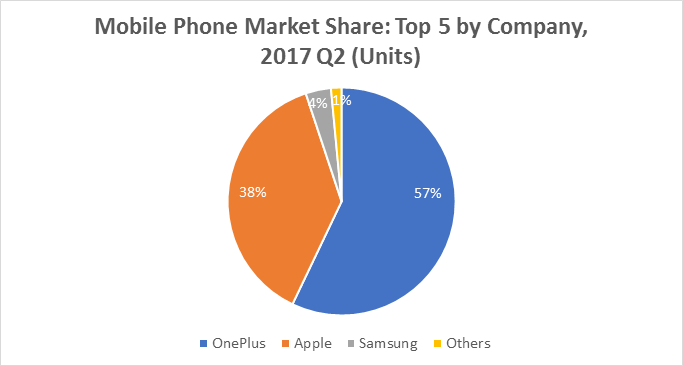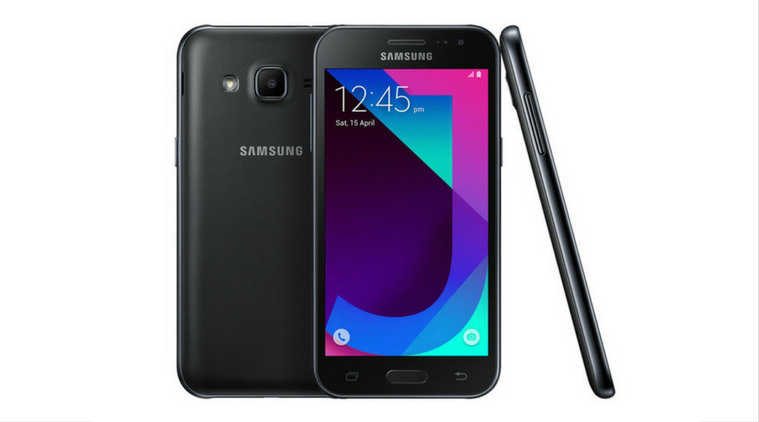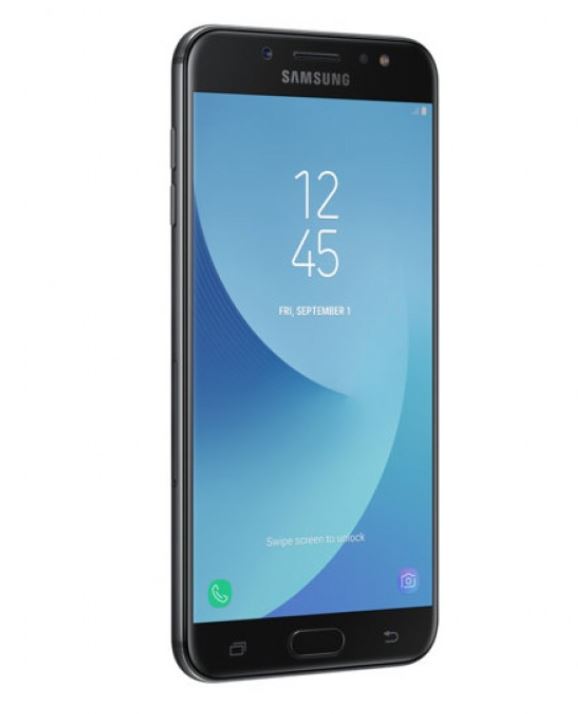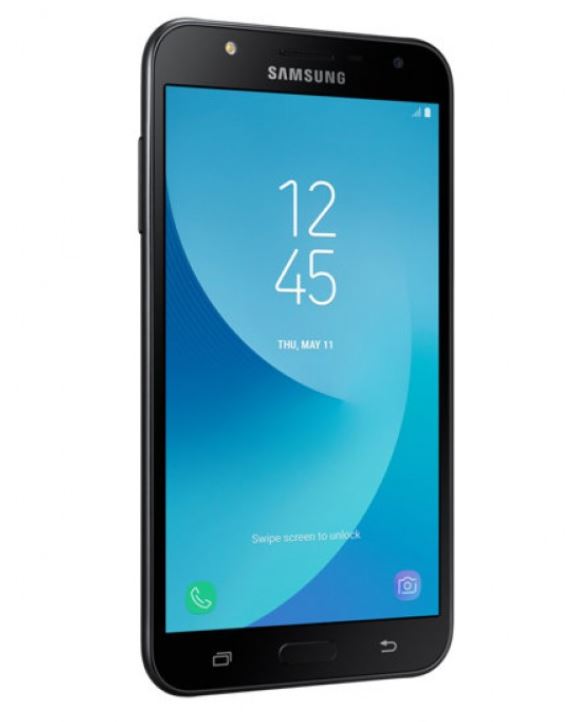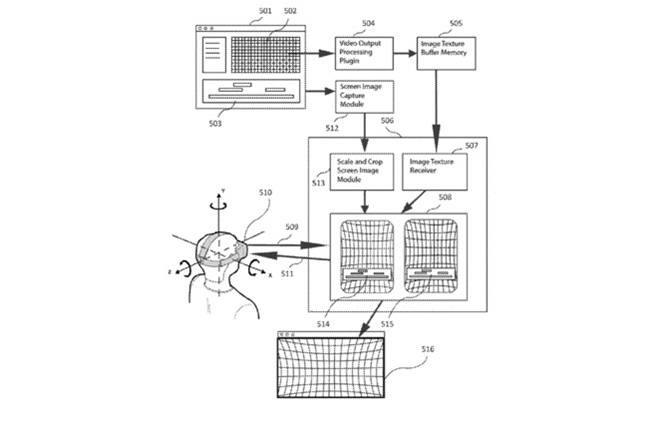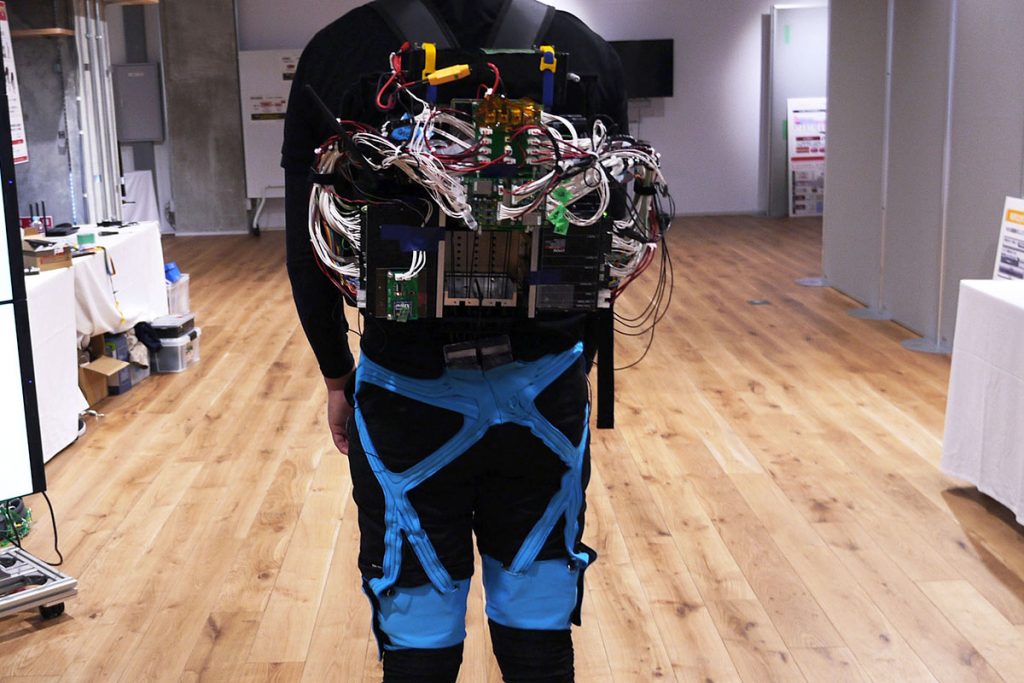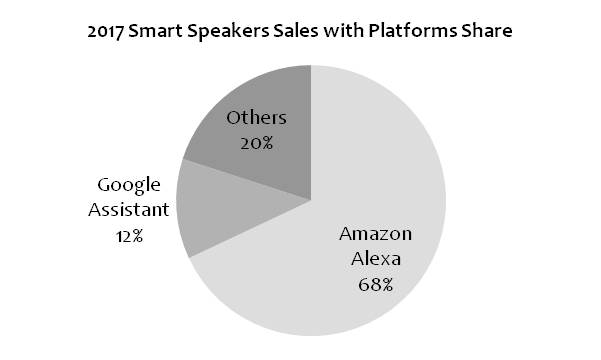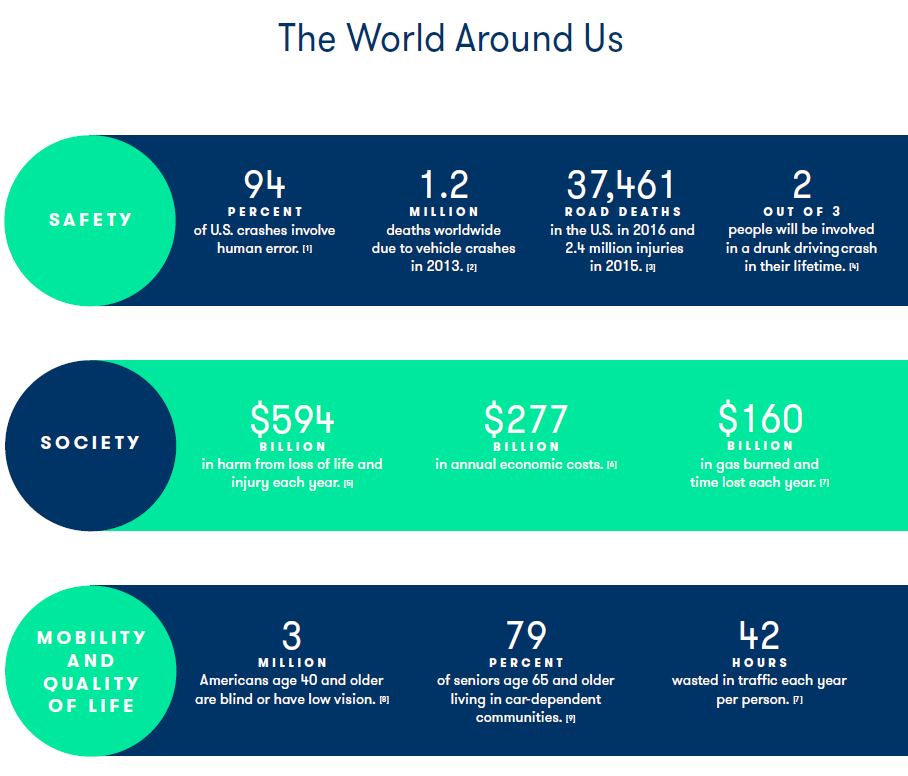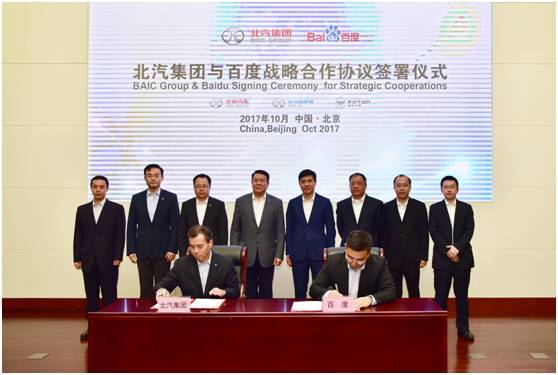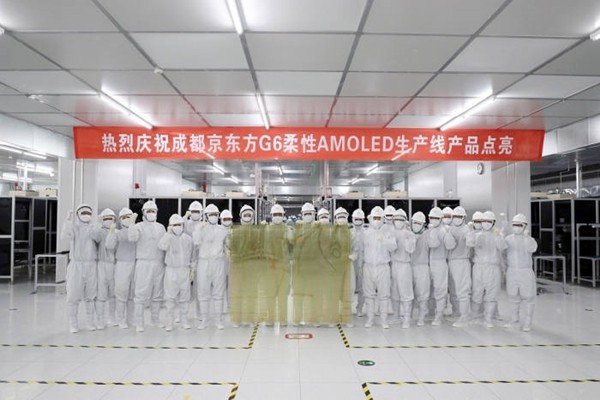
10-15: Qualcomm has filed lawsuits in China which would ban the sale and manufacturing of Apple’s iPhones in the country; BOE is going to start producing flexible OLEDs at its B7 plant in Chengdu; etc.
Chipsets
Qualcomm has filed lawsuits in China which would ban the sale and manufacturing of Apple’s iPhones in the country. China is estimated to account for about 22.5% of Apple’s iPhone sales, which is around USD215.6B, in the past financial year. (Android Headlines, Bloomberg, The Verge, Sohu, Wall Street CN)
Qualcomm is reportedly working on Snapdragon 855 SoC, which will be using TSMC’s 7nm process to manufacture, and expects to launch in 2019. (CN Beta, Sohu, UDN, Gizmo China, Android Headlines)
MediaTek Helio P40 is reportedly to be launched in end 2017 / beginning 208, which will be used for China mid-range smartphones. It features octa-core design, manufactured by TSMC with 12nm. This SoC reportedly is used to compete against Qualcomm Snapdragon 670. (Sohu, China Times, Money-Link, Gizbot)
Worldwide semiconductor revenue is forecast to total USD411.1B in 2017, an increase of 19.7% from 2016, according to Gartner. The semiconductor market is expected to increase 4% in 2018 and reach USD427.4B. Gartner forecasts the market to decline 1% in 2019 as the memory market turns with leading vendors adding new supply. (Laoyaoba, Gartner)
Touch Display
Since 2009, in only 7 / 8 years, Mainland China has or is building more than 10 production lines for 5.5G and 6G LTPS AMOLED. China panel makers technology advance is not that far behind, yet it lacks commercialization, and marketing experience, thus difficult to catch up with Samsung. Currently the most important objective of Chinese vendors is to increase yield rate, yet the industry is worried about over-supply. The more challenging though is flexible display. Chinese Academy of Science (CAS) chairman Ouyang Zhongchan anticipates in 2017 Mainland China AMOLED production is likely only 600Km2, but by 2022, it will reach 25.89Mm2, which more than 4000% growth. (Laoyaoba, EE World, Sohu, East Day)
BOE is going to start producing flexible OLEDs at its B7 plant in Chengdu, at the end of Oct 2017. It has already secured parts and materials that are needed to manufacture flexible OLEDs and is planning to produce 5.99” flexible OLEDs starting from Nov 2017 after starting off with 5.5” flexible OLEDs. It BOE is going to produce about 10,000 flexible OLEDs per month. Although its output is rather small due to low yield, it is going to supply its flexible OLEDs to Huawei. (China Times, ET News)
IHS analyst Wu Rongbing forecasts by 2020, AMOLED panel shipment will be more than 800M units, and 767M of which will be used for smartphone. He also indicates that G5.5 and G6 are expanding in China, and by 2022 there will be 14 production lines, including 3 G5.5 LTPS+OLED, 2 G6 a-Si, 1 G6 Oxide+OLED and 8 G6 LTPS+OLED. (Laoyaoba, Jinrixinxi)
Samsung is allegedly accelerating its efforts to develop an advanced TV technology, dubbed micro LED, in a bid to replace the firm’s highest-end Quantum LED TV that has fallen short of helping it boost market share in the premium TV segment. it is working on a deal to take over Taiwan-based micro LED firm, presumably PlayNtride. (OLED-Info, The Investor, Sina)
Taiwan’s Industrial Technology Research Institute (ITRI) is continuing to improve its foldable AMOLED display technology performance. Their newest version’s performance is already rapidly approaching commercial standards with excellent display quality and the capacity to be integrated with touch functionality. It is also abrasion-resistant and folding-resistant. (OLED-Info, CTimes, UDN, Apple Daily)
Sensory
According to Digitimes, fabless IC firm Himax has begun shipments of chips based on wafer-level optics (WLO) technology to Apple. It is reportedly a key component of the iPhone X’s face ID sensor. ChipMOS will also see revenues generated from orders for WLO chips increase substantially later in 2017 as the backend house has cut into the supply chain for the iPhone X by partnering with Himax. (Laoyaoba, Patently Apple, Digitimes, press)
Biometrics
KGI Securities analyst Ming-Chi Kuo said that Apple is planning to bring its Face ID facial scanner to every iPhone it releases next year. Additionally, Kuo said that Apple will remove the Touch ID fingerprint sensor in future iPhones and rely entirely on Face ID to verify a person’s identity and allow him or her access to the iPhone’s software. (CN Beta, CNET, Fortune, 9to5Mac)
Battery
LG Chem will produce 100,000 batteries for electric cars per year in a factory in Poland that is to be completed in 2018. LG Chem said its factory to be built near the western city of Wroclaw will be Europe’s largest. (Laoyaoba, Reuters, NASDAQ, US News, TechCrunch)
Smartphones
BlackBerry and BLU Products have moved to resolve their court battle related to intellectual property rights by entering into a settlement in which BLU has agreed to pay patent license fees to the Canadian original equipment manufacturer (OEM) on an ongoing basis. (Android Headlines, Fortune, Reuters, Mingbao, Taiwan Fans Club)
According to mobile expert and former Nokia Global Head of 3G Business Consulting Tomi Ahonen, HMD Global is on track to sell 10.5M Nokia branded phones in its first year of global availability. (Android Headlines, Twitter, Communities Dominate Brands)
Xiaomi aims to become more of an internet company in India going forward, replicating its China model, by monetising a host of services such as finance and entertainment, a top executive said, adding that the short-term goal remains to take leadership position in the handset space. Manu Jain, managing director of Xiaomi’s India operations said that the internet-company model took 7 years in China to take shape and will take some years to fructify in India where Xiaomi has been operating for just 3 years. (CN Beta, Economic Times)
Xiaomi Technology has agreed a deal with Jianye district government in Nanjing, Jiangsu province, to establish its East China headquarters in the city. The office will become the firm’s main research and development center and serve as an incubator for local science and technology enterprises. (Laoyaoba, Tencent, Sina, Taipei Times, Yicai Global)
Apple has reportedly been working on an iPhone that would come with a stylus, which could launch in 2019 or later if it comes to fruition. (CN Beta, Mac Rumors, The Investor, Apple Insider)
Apple products continue enjoy healthy demand from young U.S. consumers, as new data from Piper Jaffray shows a record 82% of teens have iPhone in mind as their next smartphone. (Apple Insider, Business Wire, Piper Jaffray, Barron’s, Sina)
Samsung Electronics co-CEO OH Kwon has resigned from his position where he was heading the Device Solutions Business. Kwon will also resign as the CEO of Samsung Display and will not seek re-election as a member of the Board of Directors and the Chairman of the Board when his term ends in Mar 2018. (Sammy Hub, GSM Arena, The Verge, CN Beta)
Samsung said that the company can sell an average of 41,000 mobile phones per hour, and more than 5,300 TV products, and Samsung will continue to deepen the follow-up operations, will strive to expand the overall mobile phone, television and other eco-system, expanding the existing product line sales force, while building intelligent home and IoT integrated applications and other development. (Digitimes, EE World, Laoyaoba)
OnePlus just issued an official statement regarding the recent reports that claim OxygenOS collects private data of those using OnePlus smartphones. OnePlus says its OxygenOS smartphones transmit analytics in two different streams: usage analytics and device information. (Phone Arena, OnePlus, C114, Sohu)
According to supply chain, OPPO and vivo has decreased their 2017 shipment forecast by about 10%. OPPO expects to have some challenge to sustain its target of 120M units, but as it has overseas market, its overall shipment will still be high. vivo is also having difficulty to keep its 100M units target. (Laoyaoba, Gooread, Hotlah, Sohu)
According Counterpoint Research, 1 in 4 users now spend more than 7 hours every day on their smartphone, these are true power users mostly running businesses on their phones or consuming digital content for long hours. Due to growing dependence on smartphones as well as availability of affordable smartphones, the average global smartphone replacement cycle has reduced to 21 months. (Counterpoint Research, press, Android Headlines, Sina)
OPPO has topped India’s offline market with OPPO A37 and A57 as per GFK reports. The brand is making its mark on the Indian market in two segments from sub-INR8,000 to 10,000 category with A37 and from sub-INT12,000 to 15,000 range with A57. (CN Beta, Gizbot)
According to IDC, OnePlus has become the top premium smartphone brand online, with a market share of 57% in India in 2Q17. In2Q17, the premium smartphone (INR26,000 or USD400 above) segment, witnessed OnePlus to become the market leader. More than half of premium smartphones sold online during 2Q17were a OnePlus, to be specific, OnePlus 3T or OnePlus 5. (CN Beta, Laoyaoba, Economic Times, Hindu Business)
Huawei Y6 Pro (2017) is launched in Europe – 5” HD IPS LCD display, Qualcomm Snapdragon 425 processor, 13MP + 5MP cameras, 2GB RAM, 16GB storage, 3020mAh battery, EUR179. (GSM Arena, Huawei, Amazon)
Samsung Galaxy J2 (2017) is launched in India – 4.7” qHD Super AMOLED display, quad-core Samsung Exynos processor, 5MP + 2MP cameras, 1GB RAM, 8GB storage, 2000mAh battery, INR7,390. (GSM Arena, Sam Mobile, India Today, Indian Express)
Samsung Galaxy J7+ and J7 core are launched in Philippines, featuring 5.5” FHD Super AMOLED display: J7+ – MediaTek Helio P25 processor, rear dual 13MP-5MP + front 16MP cameras, 4GB RAM, 32GB storage, Android 7.1, 3000mAh battery, PHP19,990 (USD390). J7 core – Samsung Exynos 7870 processor, rear 13MP + front 5MP cameras, 2GB RAM, 16GB storage, Android 7.1, 3000mAh battery, PHP9,990 (USD195). (GizChina, GSM Arena, Samsung, Samsung)
Wearables
Apple’s new patent application addresses dynamic modification of images, to present it, and relevant text-based data, to a user in real-time. The patent application is applicable to static and moving images, both in a limited field of view, and encompassing all of the X, Y, and Z axes for a full panorama of vision. (Apple Insider, USPTO, HiVR)
Apple CEO Tim Cook said he believes augmented reality (AR) will transform everything from fashion runway shows to shopping. He envisions a world where customers will essentially be able to “point and buy” products. He is so confident in AR future that he believes the technology will become “as key as having a website” for brands. (CN Beta, Mac Rumors, Vogue)
A body-hugging robotic suit lets the wearer turn as they walk. The design from Panasonic Research in Japan made from snug-fitting soft robotics, looks a bit like Spanx with an outboard motor – a pack on the back contains eight motors, batteries and a control system. Instead of joint motors driving leg movement, it has four actuators at the hips to control criss-crossing soft plastic wires that mimic the action of human muscles, which contract to generate movement. (CN Beta, New Scientist)
Internet of Things
According to Strategy Analytics, as a result of wider product choice and country availability, 4Q17 sales of smart speakers are expected to reach nearly 12M units globally, bringing the full year total to 24M units. An estimated 68% of all smart speakers sold in 2017 will run on Amazon Alexa platform while Google Assistant will account for just over 12% of sales. (Laoyaoba, Strategy Analytics)
Alphabet’s Waymo has submitted a safety report to the Transportation Department, offering the most detailed description yet of how it equips and programs vehicles to avoid the range of mundane and outrageous problems that are part of driving in America. (CN Beta, Ars Technica, TechCrunch, Waymo, report, CNET)
Microsoft and Amazon have announced their collaboration in the formation of Gluon, a new deep learning library which allows developers to build sophisticated machine learning models with relative ease. The Gluon interface will help developers to build machine learning models by providing them with a Python API, along with prebuilt neural network components. (CN Beta, Neowin, Microsoft)
Baidu hopes to be in the business of mass producing autonomous cars by 2021, thanks to a partnership with BAIC Group. BAIC Group is one of Baidu’s many partners for its Apollo autonomous driving program, and it’ll use the open platform to produce vehicles with Level 3 autonomous features by 2019 before moving on to fully self-driving Level 4 cars by 2021. (TechCrunch, Sina, Sohu)
Waymo is working with a number of organizations on a new self-driving education campaign “Let’s Talk Self Driving” to help answer questions the public has about autonomous vehicles and technology. It includes participation from Mothers Against Drunk Driving, the National Safety Council, the Foundation for Blind Children, the East Valley Partnership and the Foundation for Senior Living. (TechCrunch, Let’s Talk Self-Driving, CN Beta)
